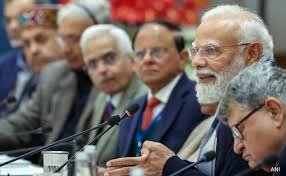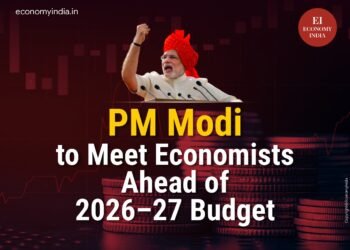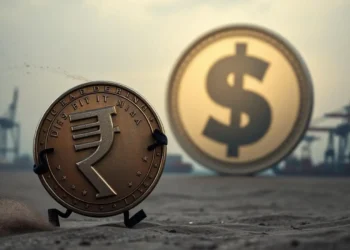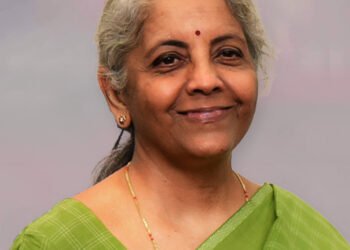The Indian economy can grow by 7-7.8 percent this fiscal on the back of better agriculture production and a revitalised rural economy amid global headwinds mainly due to the ongoing Russia-Ukraine war, eminent economists said.
Eminent economist and BR Ambedkar School of Economics (BASE) Vice-Chancellor NR Bhanumurthy said at present Indian economy is facing multiple headwinds largely from external sources.
Noting that global inflationary pressures and the Russia-Ukraine war have brought in risks to the economy, which is otherwise strong with all the domestic macro fundamentals being well managed, he said unlike advanced economies, India’s Covid stimulus measures, especially the fiscal policy interventions, are less inflationary and rather growth-enhancing.
Also Read: Income Tax Department conducts searches in Rajasthan and Mumbai
“With better agricultural production and revitalised rural economy India should touch 7 percent growth in the current year despite global headwinds,” Bhanumurthy told PTI.
Echoing similar views, eminent economist and Institute for Studies in Industrial Development (ISID) director Nagesh Kumar said the high-frequency indicators point to a robust growth momentum carrying through 2022-23 with a real GDP growth somewhere between 7-7.8 percent.
French economist Guy Sorman said India could be severely impacted by the high cost of energy and fertiliser imports.
“However, because India is still, largely an agricultural economy, the social impact of slower growth will be tempered by city workers going back to their village.
“This could increase agricultural production and grain exports,” Sorman added.
The World Bank has cut India’s economic growth forecast for the current fiscal to 7.5 percent as rising inflation, supply chain disruptions, and geopolitical tensions taper recovery.
India’s economy grew 8.7 percent in the last fiscal (2021-22) against a 6.6 percent contraction in the previous year.
In its third monetary policy of 2022-23, the Reserve Bank retained its GDP growth forecast at 7.2 percent for the current fiscal, but cautioned against negative spillovers of geopolitical tensions and a slowdown in the global economy.
Also Read: Need to protect consumers amid consolidation of internet economy in hands of few: Govt
On high inflation, Bhanumurthy said, CPI inflation peaked in March 2022 and a large part of the CPI inflation in the last three months is driven by fuel prices.
“Delayed transmission of domestic fuel prices and rise in global fuel and other commodity prices appears to have led to a sudden spurt in CPI inflation,” he said, adding that recent policy measures, such as reduction in fuel taxes and hike in policy interest rates, should smoothen inflation and inflation expectations in the coming quarters.
Kumar noted that the global headwinds of rising commodity prices do pose downside risks for the Indian economic outlook as the CPI levels are elevated.
“Yet, I do not think that India is heading towards stagflation, given that the growth momentum seems quite robust,” Kumar argued.
According to Sorman, inflation has become a global phenomenon, caused by unanimous poor money management, an excess of public expenses (largely justified to compensate for Covid-19), and low-interest rates.
Also Read: Karnataka to work towards $1.25 trillion economy: CM Basavaraj Bommai
“The monetary bubble is exploding everywhere. India is not different,” he pointed out.
Retail inflation eased to 7.04 percent in May, mainly on account of softening food and fuel prices as the government and the RBI stepped in to control spiralling price rise by way of duty cuts and repo rate hikes.
However, the inflation print stayed above the Reserve Bank’s upper tolerance level of 6 percent for the fifth month in a row.
Asked whether India’s economy is in a better place than eight years ago, Sorman said Prime Minister Narendra Modi was selected to fight public corruption and stimulate the Indian economy.
“Modi has, partially, of course, fulfilled his agenda. Most Indians are better off today than they were eight years ago,” he said. (Economic Times)















